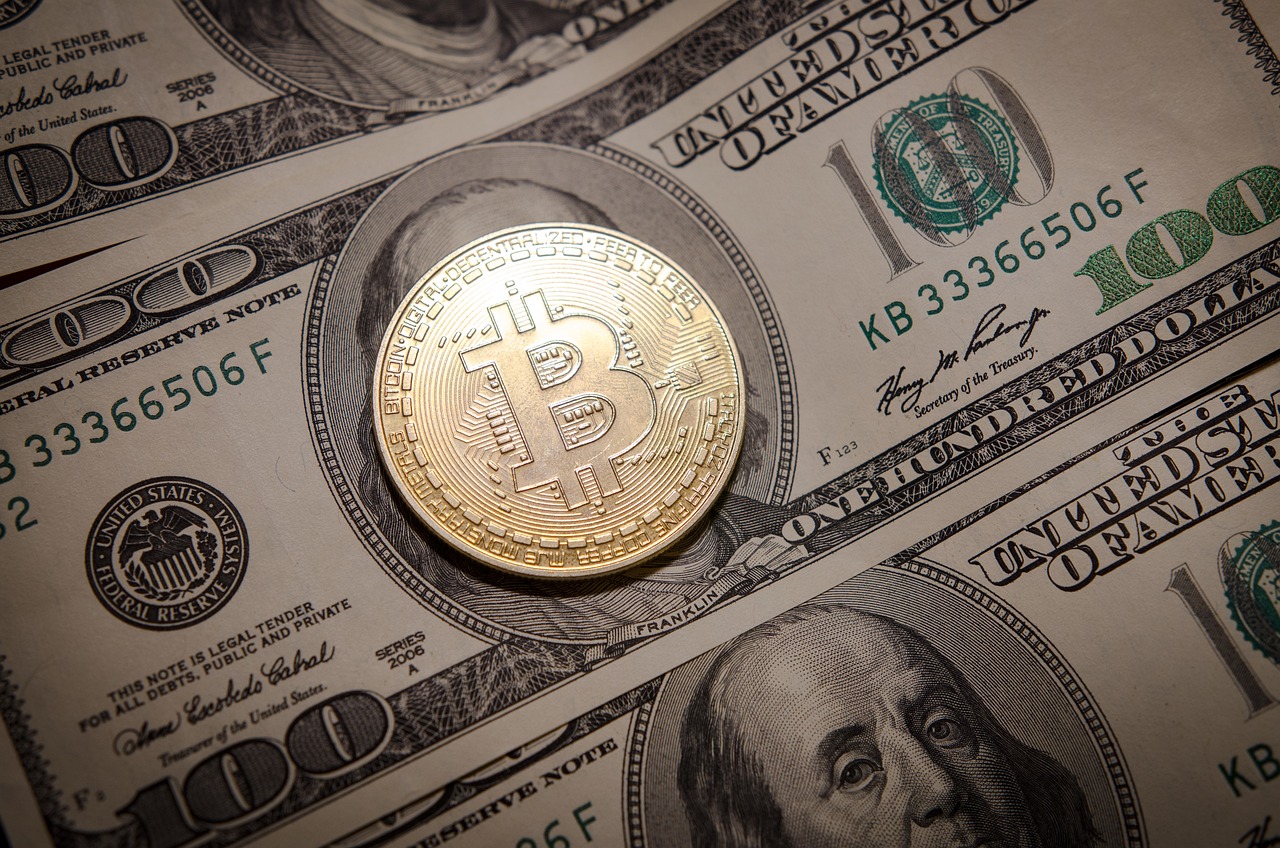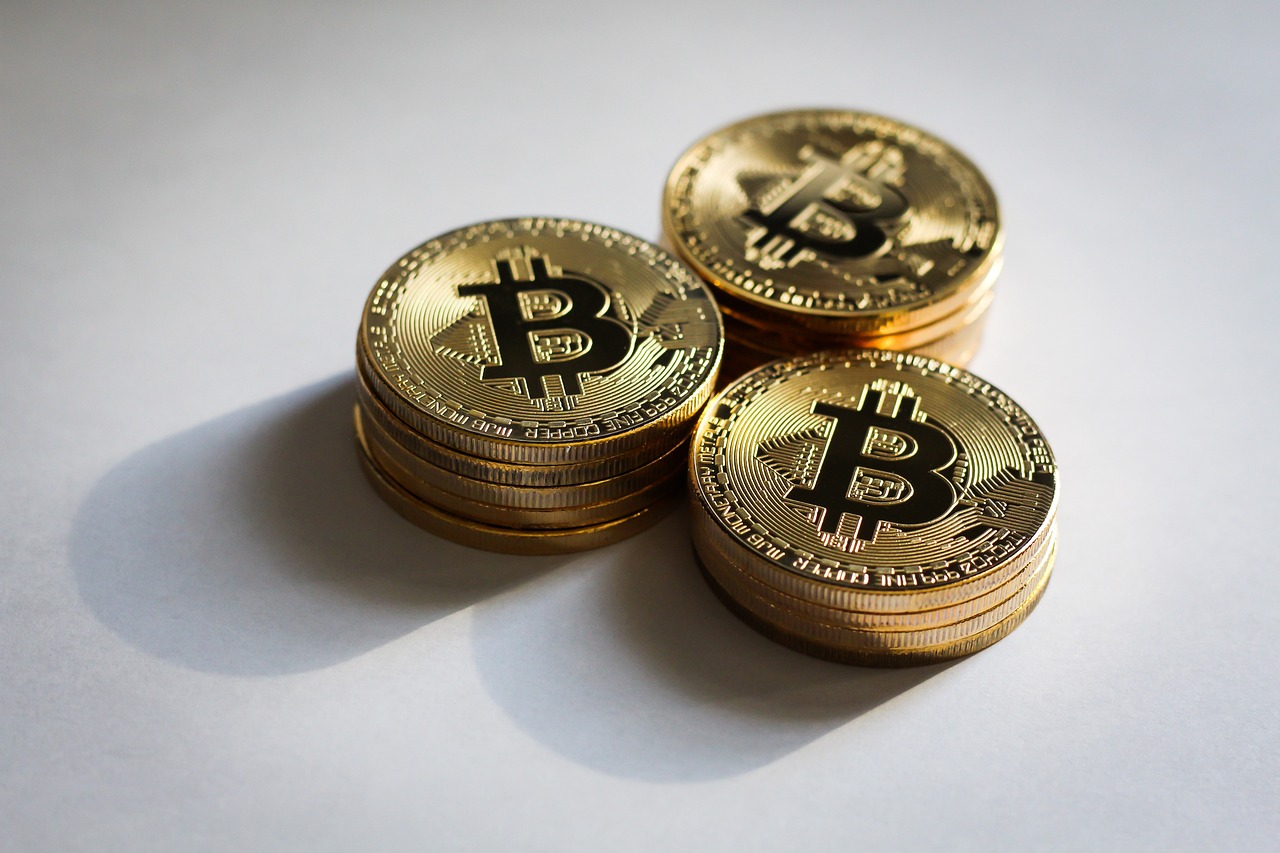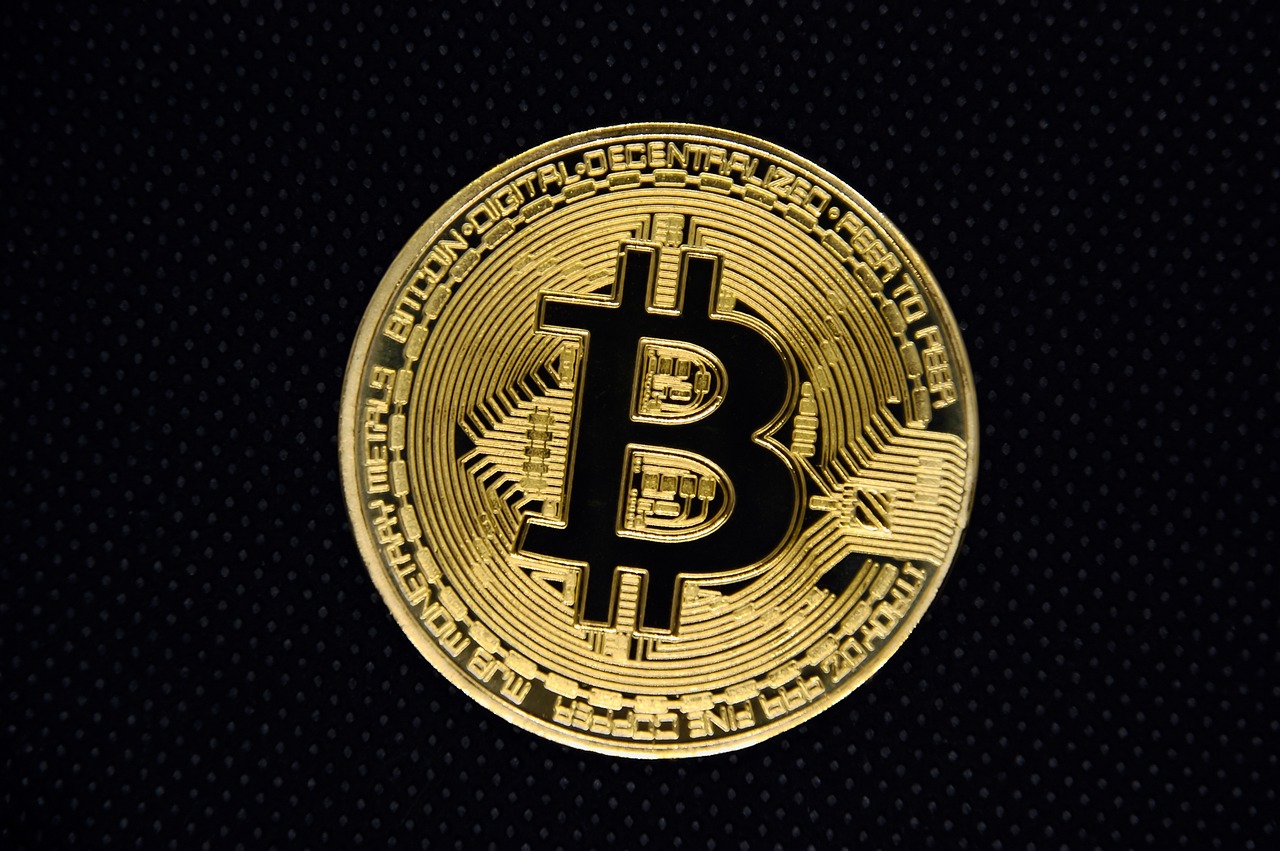Market Predictions - The Future of Crypto Regulations
The world of cryptocurrency is like a thrilling roller coaster ride—full of ups, downs, and unexpected twists. As we stand on the brink of a new era in digital finance, the **future of cryptocurrency regulations** is a hot topic that has everyone buzzing. With the rapid evolution of technology and the growing adoption of cryptocurrencies, regulatory frameworks are becoming increasingly crucial. But what does the future hold? In this article, we’ll dive deep into the anticipated developments in crypto regulations, exploring how they might reshape the market, influence investor behavior, and alter the broader financial landscape.
To understand where we’re headed, we must first look at where we are. Currently, the regulatory landscape for cryptocurrencies varies widely across the globe. Some countries have embraced digital currencies, creating clear guidelines for their use, while others have taken a more cautious or even hostile stance. For instance, the United States has a patchwork of regulations that differ from state to state, while the European Union is working towards a more unified approach. In contrast, nations like China have imposed strict bans on cryptocurrency trading and mining. This divergence creates a complex environment for investors and businesses alike.
Government policies wield significant influence over the cryptocurrency market. When a country announces new regulations, it can send shockwaves through the market, impacting investor sentiment and market stability. For example, news of regulatory crackdowns often leads to increased volatility, as traders react to potential risks. On the flip side, positive regulatory developments can spark optimism and drive investment. It’s a delicate balance, and understanding this dynamic is crucial for anyone looking to navigate the crypto landscape.
As we look to the future, several key trends are emerging in global cryptocurrency regulations. One of the most notable is the push for **harmonization**—countries are beginning to recognize the need for a cohesive regulatory framework that can accommodate the global nature of cryptocurrencies. This is especially evident in major economies like the U.S., EU, and Asia, where regulators are collaborating to establish common standards. However, differing approaches remain a challenge, as each jurisdiction grapples with its own economic and political considerations.
To illustrate the impact of regulatory changes, let’s consider a few case studies. For instance, when the SEC in the United States began to enforce stricter rules on initial coin offerings (ICOs), many projects were forced to reevaluate their strategies. Some collapsed, while others adapted and thrived. Similarly, in 2021, the EU's MiCA proposal aimed to create a comprehensive regulatory framework for cryptocurrencies, leading to increased interest from institutional investors. These examples underscore the profound effects that regulatory changes can have on market dynamics.
So, how do investors typically react to regulatory news? The answer is complex. Generally, regulatory announcements can lead to significant shifts in trading volumes and market volatility. For example, when favorable regulations are introduced, investors may flock to buy, driving prices up. Conversely, negative news can trigger panic selling. Understanding these patterns is essential for investors looking to make informed decisions in a rapidly changing environment.
Looking ahead, experts predict that cryptocurrency regulations will continue to evolve. We may see the introduction of new frameworks that prioritize consumer protection while fostering innovation. Additionally, enforcement mechanisms are likely to become more sophisticated, leveraging technology to monitor compliance effectively. As the regulatory landscape matures, it will be crucial for investors and businesses to stay informed and adaptable to navigate these changes successfully.
In this ever-changing regulatory environment, technology plays a pivotal role in facilitating compliance. Blockchain technology, for instance, offers unparalleled transparency, enabling regulators to track transactions more efficiently. Furthermore, smart contracts can automate compliance processes, reducing the burden on businesses and ensuring adherence to regulations. This synergy between technology and regulation is set to redefine how the cryptocurrency market operates.
Several innovative solutions are emerging to help businesses navigate the complex regulatory landscape surrounding cryptocurrencies. From advanced analytics tools that monitor compliance to platforms that streamline reporting processes, these technologies are designed to make compliance more manageable. As these solutions gain traction, they will empower businesses to operate confidently within regulatory frameworks.
However, it’s not all smooth sailing. Regulators face numerous challenges in implementing effective cryptocurrency regulations. The rapid pace of technological innovation often outstrips the ability of regulatory bodies to keep up. Additionally, cross-border issues complicate enforcement, as cryptocurrencies defy traditional geographic boundaries. Addressing these challenges will require collaboration among regulators, industry stakeholders, and technology providers.
As we wrap up our exploration of the future of crypto regulations, it’s clear that staying informed and adaptable will be key for investors, businesses, and regulators alike. The landscape is evolving, and those who can navigate these changes will be best positioned to thrive. Whether you’re a seasoned investor or just dipping your toes into the world of cryptocurrencies, understanding the regulatory environment will be crucial for making informed decisions in the years to come.
- What are the main challenges in cryptocurrency regulation? The main challenges include rapid technological advancements, cross-border issues, and the need for harmonization among different jurisdictions.
- How do regulations affect cryptocurrency prices? Regulatory announcements can lead to significant price fluctuations, with positive news often driving prices up and negative news causing declines.
- What role does technology play in compliance? Technology facilitates compliance through tools like blockchain for transparency and smart contracts for automated processes.
- Will regulations stifle innovation in the cryptocurrency space? While some regulations may pose challenges, many experts believe that a balanced regulatory approach can foster innovation while protecting consumers.

Current Regulatory Landscape
The for cryptocurrencies is a complex tapestry woven from various jurisdictions, each with its own unique approach to digital asset management. As the world becomes increasingly digitized, governments and regulatory bodies are scrambling to catch up with the rapid evolution of cryptocurrencies. The regulatory environment can often feel like a game of chess, with each move impacting the market and investor sentiment in significant ways. Countries like the United States, European Union, and China are at the forefront of this regulatory chessboard, each adopting distinct strategies that reflect their economic philosophies and technological readiness.
In the U.S., the regulatory framework is often characterized by a patchwork of federal and state regulations. The Securities and Exchange Commission (SEC) plays a pivotal role in determining whether certain cryptocurrencies are classified as securities, which subjects them to stringent regulatory scrutiny. Meanwhile, the Commodity Futures Trading Commission (CFTC) oversees derivatives trading in cryptocurrencies, adding another layer of complexity. This dual oversight can create confusion for investors and businesses alike, leading to an environment where compliance feels like navigating a minefield.
Across the Atlantic, the European Union is striving for a more unified approach. The Markets in Crypto-Assets (MiCA) regulation aims to harmonize the regulatory framework across EU member states, promoting innovation while ensuring consumer protection. This is a significant step, as it seeks to eliminate the regulatory arbitrage that can occur when businesses operate in jurisdictions with lax regulations. However, the implementation of MiCA is still in progress, and the exact impact on the market remains to be seen.
Meanwhile, in Asia, countries like Singapore and Japan have established themselves as crypto-friendly jurisdictions. Singapore's Monetary Authority has introduced a licensing regime that encourages innovation while maintaining rigorous standards for anti-money laundering (AML) and counter-terrorism financing (CTF). Japan, on the other hand, has recognized cryptocurrencies as legal tender, leading to a more stable regulatory environment that fosters growth in the crypto sector. However, not all Asian countries are as welcoming; nations like China have taken a hardline stance against cryptocurrencies, banning trading and initial coin offerings (ICOs), which has sent shockwaves through the global market.
To illustrate these varying approaches, the following table summarizes key regulatory stances of selected jurisdictions:
| Country | Regulatory Body | Key Regulations | Stance on Crypto |
|---|---|---|---|
| United States | SEC, CFTC | Securities Act, Commodity Exchange Act | Mixed |
| European Union | European Commission | MiCA Regulation | Proactive |
| Singapore | Monetary Authority of Singapore | Payment Services Act | Supportive |
| Japan | Financial Services Agency | Payment Services Act | Supportive |
| China | People's Bank of China | ICO Ban, Crypto Trading Ban | Restrictive |
As we can see, the regulatory landscape is anything but uniform. It is essential for investors and businesses to stay informed about these regulations, as they can significantly influence market dynamics. Understanding the current landscape not only prepares investors for potential shifts but also helps them navigate the complexities of compliance. With the rapid pace of technological advancements in the crypto space, the regulatory environment will likely continue to evolve, making it vital for stakeholders to remain agile and informed.

Impact of Government Policies
Government policies wield a tremendous influence over the cryptocurrency landscape, shaping everything from market dynamics to investor behavior. When a government announces a new regulation or policy regarding digital assets, it can send ripples through the market, causing price fluctuations and shifts in investor sentiment. For instance, a simple announcement about increased scrutiny on cryptocurrency exchanges can lead to panic selling, while news of favorable regulations might trigger a buying frenzy. This volatility can often feel like a roller coaster ride, where investors are left to navigate the ups and downs with bated breath.
To fully grasp the impact of these policies, it's essential to consider several key factors:
- Investor Sentiment: Government regulations can significantly sway how investors perceive the cryptocurrency market. Positive regulatory news can boost confidence, while stringent regulations might drive cautious investors to the sidelines.
- Market Stability: Clear and consistent regulations can lead to a more stable market environment. Conversely, frequent changes or ambiguous policies can create uncertainty, resulting in increased market volatility.
- Innovation vs. Regulation: Striking the right balance between fostering innovation and ensuring consumer protection is a challenge. Overregulation can stifle creativity in the crypto space, while underregulation can expose investors to risks.
Let's take a closer look at how these factors interplay through recent examples. In 2021, when the Chinese government declared a crackdown on cryptocurrency mining and trading, the market experienced a significant downturn. Bitcoin's price plummeted, demonstrating how swift regulatory actions can lead to immediate market reactions. On the other hand, when El Salvador adopted Bitcoin as legal tender, it sparked enthusiasm among investors and led to a rally in Bitcoin's value. These instances illustrate how government policies can either act as a catalyst for growth or a barrier to progress.
Moreover, the impact of government policies isn't limited to just immediate market reactions. It also shapes long-term investment strategies. For example, investors may begin to favor jurisdictions with clearer regulatory frameworks, leading to a shift in where capital flows within the crypto ecosystem. This trend can result in a geographical redistribution of crypto-related businesses and startups, as they seek environments that support innovation while providing regulatory clarity.
In addition, the global nature of cryptocurrency means that regulations in one country can have far-reaching effects. As countries like the U.S., EU, and various Asian nations develop their regulatory frameworks, the ripple effects can be felt worldwide. Investors are increasingly looking at how these regulations will impact cross-border transactions and the international crypto market. For instance, if the U.S. implements strict regulations, it could discourage investment from foreign entities, leading to a decline in market liquidity.
Ultimately, the impact of government policies on the cryptocurrency market is profound and multifaceted. As the regulatory landscape continues to evolve, both investors and businesses must stay informed and agile, ready to adapt to the shifting tides. The key takeaway is that while regulations can introduce challenges, they also present opportunities for growth and innovation in the ever-evolving world of digital assets.
- How do government regulations affect cryptocurrency prices?
Government regulations can lead to immediate price fluctuations based on investor sentiment. Positive regulations may cause prices to rise, while negative ones can lead to declines. - What role does investor sentiment play in the cryptocurrency market?
Investor sentiment is crucial; it can drive market trends and influence trading volumes significantly, often reacting to news about regulations. - Are all countries regulating cryptocurrencies in the same way?
No, countries have varying approaches to cryptocurrency regulations, leading to a complex global landscape where some regions are more favorable than others.

Global Regulatory Trends
The landscape of cryptocurrency regulation is evolving at a breakneck pace, with different countries and regions adopting unique approaches. As we navigate this complex terrain, it's becoming increasingly clear that harmonization—or, at the very least, a coordinated effort among major economies—is essential. Take the United States, for example. It has been characterized by a patchwork of regulations that vary from state to state, leading to confusion and uncertainty among investors and businesses alike. In contrast, the European Union is working towards a more unified framework, aiming to create a single market for digital assets that could streamline compliance and enhance investor protection.
In Asia, the regulatory environment is equally diverse. Countries like China have taken a hardline stance against cryptocurrencies, implementing strict bans on trading and Initial Coin Offerings (ICOs). Meanwhile, nations such as Singapore and Japan are embracing digital assets, establishing frameworks that encourage innovation while also ensuring consumer protection. This divergence in regulatory attitudes highlights the need for international dialogue and cooperation to prevent regulatory arbitrage, where businesses might relocate to jurisdictions with more favorable regulations.
According to recent reports, there are several key trends emerging in global cryptocurrency regulations:
- Increased Regulatory Scrutiny: Authorities around the world are ramping up their oversight of cryptocurrency transactions and exchanges, aiming to combat fraud and money laundering.
- Focus on Consumer Protection: Regulators are increasingly concerned about the risks posed to retail investors, leading to calls for stricter rules around advertising and disclosure.
- Taxation Frameworks: Countries are developing clearer guidelines on how cryptocurrencies should be taxed, which can significantly impact investor behavior.
Furthermore, the rise of decentralized finance (DeFi) has introduced new challenges for regulators. Traditional financial regulations were designed with centralized entities in mind, and adapting these frameworks to decentralized platforms is no easy feat. Regulators are grappling with questions about how to enforce compliance when no single entity is responsible for a DeFi protocol. This is where we see the potential for innovative regulatory solutions, such as the use of blockchain technology to enhance transparency and accountability.
As we look to the future, it's crucial for investors and businesses to stay informed about these global regulatory trends. Understanding how different jurisdictions approach cryptocurrency regulation can provide strategic insights into market opportunities and risks. For instance, companies operating in multiple countries may need to develop compliance strategies that account for varying regulations, which can be both a challenge and an opportunity for growth.
In summary, the global regulatory landscape for cryptocurrencies is not only diverse but also dynamic. As countries continue to refine their approaches, the interplay between regulation and innovation will shape the future of the cryptocurrency market. Keeping an eye on these trends will be essential for anyone looking to navigate the complexities of digital assets effectively.
Q1: Why are different countries adopting varying regulations for cryptocurrencies?
A1: Countries have different economic priorities, legal frameworks, and levels of technological adoption, which influence their approach to regulating cryptocurrencies. Some prioritize innovation and economic growth, while others focus on consumer protection and financial stability.
Q2: How do regulatory changes impact cryptocurrency prices?
A2: Regulatory announcements can lead to significant price fluctuations in the cryptocurrency market. Positive regulations may boost investor confidence and drive prices up, while negative news can trigger sell-offs and market volatility.
Q3: What role does international cooperation play in cryptocurrency regulations?
A3: International cooperation is vital to create a cohesive regulatory environment that prevents regulatory arbitrage and ensures consumer protection across borders. It helps maintain market integrity and fosters a more stable investment climate.

Case Studies of Regulatory Changes
When we talk about the impact of regulatory changes on cryptocurrency markets, it's essential to look at real-world examples that illustrate these shifts. One of the most notable case studies is the 2017 Initial Coin Offering (ICO) boom followed by the crackdown by the U.S. Securities and Exchange Commission (SEC). During 2017, thousands of ICOs emerged, raising billions of dollars for various projects. However, in early 2018, the SEC began to classify many of these ICOs as securities, leading to a dramatic shift in the market. The immediate aftermath saw a significant decline in ICO funding and a sharp decrease in the prices of many cryptocurrencies.
Another significant case is the Chinese government's ban on cryptocurrency trading in September 2017. This decision sent shockwaves through the global crypto market, resulting in a massive sell-off. Bitcoin's price plummeted from around $4,000 to below $3,000 within days. The regulatory environment in China was a wake-up call for investors, highlighting how government policies could drastically alter market dynamics. This case exemplifies how regulatory announcements can create fear and uncertainty, leading to sudden market volatility.
In contrast, we can look at the European Union's approach to cryptocurrency regulations. The EU has been working towards a comprehensive regulatory framework known as the Markets in Crypto-Assets (MiCA). This initiative aims to create a unified regulatory environment across member states, which could provide more clarity and stability for investors and businesses alike. As countries within the EU begin to adopt these regulations, we might see a more organized market, attracting institutional investors who have been hesitant due to the fragmented regulatory landscape.
| Case Study | Regulatory Change | Market Impact |
|---|---|---|
| 2017 ICO Boom | SEC's classification of ICOs as securities | Decline in ICO funding and cryptocurrency prices |
| China's Trading Ban | Government ban on cryptocurrency trading | Sharp price drop, increased market volatility |
| EU MiCA Framework | Introduction of a unified regulatory framework | Potential for increased institutional investment |
These case studies highlight the dynamic relationship between regulatory changes and market behavior. Investors often react to regulatory news with a mix of optimism and apprehension, which can lead to volatile trading conditions. Understanding these historical precedents can give us valuable insights into how future regulations might shape the cryptocurrency landscape.
As we move forward, it's crucial for investors to stay informed about regulatory developments. The landscape is continually evolving, and being aware of these changes can help investors make more informed decisions. After all, in the world of cryptocurrency, knowledge is power, and staying ahead of the curve can mean the difference between profit and loss.
- What are the most significant regulatory changes in the cryptocurrency space? The SEC's classification of ICOs as securities and China's ban on trading are among the most impactful.
- How do regulatory changes affect cryptocurrency prices? Regulatory announcements can lead to market volatility, often resulting in sharp price fluctuations.
- What is the EU's MiCA framework? MiCA aims to create a unified regulatory environment across EU member states for cryptocurrencies.
- Why is it important for investors to stay informed about regulations? Understanding regulations helps investors navigate the market and make informed decisions, minimizing risks.

Investor Reactions to Regulations
When it comes to the world of cryptocurrencies, can be as unpredictable as the market itself. Imagine a roller coaster ride where every twist and turn represents a new announcement from regulators. One moment, prices soar as news of favorable legislation breaks; the next, they plummet when stricter rules are proposed. This volatile relationship between regulation and investor sentiment is crucial to understanding how the crypto market behaves.
Historically, we’ve seen that when regulatory news hits, it often leads to a flurry of activity in the markets. For instance, a positive regulatory announcement can trigger a surge in buying, as investors rush to capitalize on what they perceive as a more secure environment for their investments. Conversely, when negative news surfaces, such as potential bans or heavy taxation, it can lead to panic selling. This knee-jerk reaction is fueled by fear and uncertainty, emotions that are all too common in the crypto space.
To illustrate, let’s look at a few key instances that have shaped investor behavior:
| Event | Date | Market Reaction |
|---|---|---|
| China's ICO Ban | September 2017 | Market dropped by 30% in a week |
| SEC Approves Bitcoin ETFs | October 2021 | Market surged by 10% in a day |
| El Salvador Adopts Bitcoin as Legal Tender | September 2021 | Market increased by 15% over two weeks |
These examples demonstrate that investor sentiment is often swayed by the regulatory landscape. When regulations are perceived as supportive, investors feel more secure and are likely to increase their holdings. On the other hand, if regulations are seen as restrictive, many may opt to withdraw their investments or shift to less regulated markets. This behavior not only affects individual portfolios but can also lead to significant shifts in market stability.
Moreover, the reactions aren’t uniform across all investor types. Retail investors, who may lack extensive knowledge of the regulatory environment, often react more emotionally, leading to high volatility. In contrast, institutional investors tend to take a more measured approach, analyzing the long-term implications of regulatory changes before acting. This difference creates a unique dynamic in the market, where retail and institutional behaviors can clash, leading to unpredictable outcomes.
In summary, understanding is essential for anyone looking to navigate the complex world of cryptocurrencies. As regulations continue to evolve, staying informed about how these changes impact market sentiment will be key to making sound investment decisions. After all, in the world of crypto, knowledge truly is power.
- How do regulations affect cryptocurrency prices?
Regulations can cause significant fluctuations in cryptocurrency prices, often leading to sharp increases or decreases in response to news and announcements. - What types of regulations exist for cryptocurrencies?
Regulations can vary widely, including taxation policies, compliance requirements, and outright bans on certain activities like ICOs. - How should investors prepare for regulatory changes?
Investors should stay informed about regulatory developments and consider diversifying their portfolios to mitigate risks associated with sudden market shifts.

Future Predictions for Regulations
As we peer into the crystal ball of cryptocurrency regulations, it's clear that the landscape is poised for significant transformation. Experts predict that the next few years will see a shift towards more comprehensive frameworks that not only address the concerns of governments but also foster innovation within the crypto space. One of the most anticipated changes is the development of global regulatory standards. As cryptocurrencies transcend national borders, the need for a unified approach will become increasingly vital. Countries like the U.S., EU, and major Asian economies are likely to engage in dialogue to create regulations that can harmonize their efforts, minimizing the fragmentation that currently exists.
Moreover, we can expect regulators to adopt a more proactive stance in monitoring and enforcing compliance. With the rise of decentralized finance (DeFi) platforms and non-fungible tokens (NFTs), regulators will need to adapt their strategies. This could lead to the establishment of new agencies or the expansion of existing ones to oversee these burgeoning sectors. The implementation of advanced technologies such as artificial intelligence and machine learning in regulatory frameworks is also on the horizon. These technologies can aid in identifying suspicious activities and ensuring that compliance measures are met without stifling innovation.
Another critical area of focus will be consumer protection. As more individuals venture into the world of cryptocurrencies, the need for regulations that safeguard investors from fraud and market manipulation will become paramount. Future regulations may include stricter requirements for transparency and disclosure from cryptocurrency exchanges and projects. This could involve mandatory audits and the publication of clear and concise information regarding risks associated with investing in cryptocurrencies.
In addition, the concept of self-regulation is gaining traction. Industry players might come together to form associations that set standards and best practices for the crypto space. This could not only enhance credibility but also provide a framework for cooperation with regulators. Such initiatives could help mitigate the regulatory burden while ensuring that the interests of investors and the integrity of the market are protected.
Finally, we must consider the role of public sentiment and advocacy in shaping future regulations. As cryptocurrency becomes more mainstream, public opinion will increasingly influence regulatory approaches. Activism and lobbying by crypto enthusiasts and businesses could lead to more favorable regulations that encourage growth and innovation. The dialogue between regulators and the crypto community will be crucial in crafting effective laws that balance security with the need for progress.
In summary, the future of cryptocurrency regulations is likely to be characterized by a blend of global cooperation, technological integration, and consumer protection. As we navigate this evolving landscape, staying informed and adaptable will be essential for all stakeholders involved.
- What are the main challenges in regulating cryptocurrencies? The primary challenges include the rapid pace of technological advancement, cross-border transactions, and the decentralized nature of cryptocurrencies.
- How will future regulations affect cryptocurrency investments? Future regulations could lead to increased investor protection and market stability, but they may also impose stricter compliance requirements on exchanges and projects.
- Will there be a global standard for cryptocurrency regulations? While there is a push towards harmonization among major economies, achieving a truly global standard remains a complex challenge due to differing national interests.
- What role does technology play in compliance? Technology, particularly blockchain and AI, can enhance transparency and automate compliance processes, making it easier for businesses to adhere to regulations.

Technological Innovations and Compliance
The intersection of technology and compliance in the cryptocurrency sector is nothing short of revolutionary. As the digital asset landscape evolves, so too does the need for innovative solutions that can streamline compliance processes while ensuring adherence to regulatory standards. One of the most significant advancements in this area is the use of blockchain technology itself, which provides a transparent and immutable ledger that can help regulators and businesses alike track transactions and verify identities with unprecedented accuracy.
Imagine a world where every transaction is recorded on a digital ledger that cannot be altered or deleted. This is the promise of blockchain, and it is transforming how compliance is approached in the crypto space. By utilizing this technology, companies can enhance their anti-money laundering (AML) and know your customer (KYC) protocols, making it easier to comply with existing regulations while also preparing for future ones. The transparency offered by blockchain means that regulators can have real-time access to transaction data, which can significantly reduce the time and resources spent on audits and investigations.
Moreover, the rise of smart contracts has introduced a new layer of automation in compliance. Smart contracts are self-executing contracts with the terms of the agreement directly written into code. This means that compliance checks can be automated, reducing the risk of human error and ensuring that all parties adhere to the agreed-upon terms without the need for intermediaries. For instance, a smart contract could automatically execute a transaction only when all regulatory conditions are met, providing a seamless experience for users while maintaining compliance.
However, the integration of these technologies is not without its challenges. The rapid pace of innovation in the crypto space often outstrips the ability of regulators to keep up. This creates a regulatory lag that can leave both businesses and investors in a state of uncertainty. For example, while a new blockchain-based compliance solution may be ready to roll out, the regulatory framework governing its use may still be in development. This disconnect can lead to hesitancy among businesses to adopt new technologies, fearing potential penalties or non-compliance.
To address these challenges, several innovative compliance solutions are emerging in the market. Companies are developing AI-driven tools that can analyze transaction patterns and flag suspicious activities in real-time. These tools not only enhance compliance but also provide valuable insights that can inform business strategies. Additionally, many firms are collaborating with regulators to create frameworks that can accommodate technological advancements while ensuring that compliance standards are maintained.
As we look toward the future, it is clear that the relationship between technology and compliance will continue to evolve. Businesses that embrace these innovations will not only stay ahead of regulatory requirements but also gain a competitive edge in the market. The key will be to remain agile and informed, adapting to changes as they arise while leveraging technology to enhance compliance efforts.
- What are smart contracts? Smart contracts are self-executing contracts where the terms are written into code, allowing for automatic execution when conditions are met.
- How does blockchain enhance compliance? Blockchain provides a transparent and immutable ledger, enabling real-time tracking of transactions and easier verification of identities.
- What challenges do regulators face with technological innovations? Regulators often struggle to keep pace with rapid technological advancements, leading to a regulatory lag that can create uncertainty for businesses.

Emerging Compliance Solutions
As the cryptocurrency landscape evolves, so does the need for effective compliance solutions that can keep pace with regulatory demands. The rapid growth of digital assets has led to a surge in innovative technologies designed to help businesses navigate the complexities of compliance. One of the most promising developments is the integration of blockchain technology itself into compliance processes. By leveraging the transparency and immutability of blockchain, companies can ensure that their transactions are traceable and verifiable, significantly reducing the risk of fraud and regulatory breaches.
Furthermore, the rise of smart contracts is revolutionizing the way compliance is managed. These self-executing contracts with the terms of the agreement directly written into code can automate compliance checks, thus minimizing human error and increasing efficiency. Imagine a world where compliance is not just a checklist but a seamless part of the transaction process. Smart contracts can automatically enforce regulations by executing actions only when certain conditions are met, making it easier for businesses to adhere to legal requirements.
Another noteworthy solution is the development of compliance-as-a-service platforms. These platforms offer a suite of tools that help businesses maintain compliance without the need for extensive in-house resources. By outsourcing compliance functions, companies can focus on their core operations while ensuring they meet regulatory standards. This model is particularly appealing to startups and smaller firms that may lack the expertise or resources to navigate the regulatory maze on their own.
Moreover, the advent of artificial intelligence (AI) and machine learning is transforming compliance monitoring. AI-driven tools can analyze vast amounts of data in real-time, identifying patterns and anomalies that may indicate non-compliance or potential fraud. This proactive approach enables businesses to address issues before they escalate, providing a significant advantage in the fast-paced world of cryptocurrency.
To illustrate the impact of these emerging solutions, consider the following table that outlines key compliance technologies and their benefits:
| Compliance Solution | Description | Benefits |
|---|---|---|
| Blockchain Technology | Utilizes a decentralized ledger for transaction verification. | Increased transparency, reduced fraud risk. |
| Smart Contracts | Automates compliance checks through self-executing agreements. | Enhanced efficiency, reduced human error. |
| Compliance-as-a-Service | Outsourced compliance management platforms. | Cost-effective, allows focus on core business. |
| AI and Machine Learning | Real-time data analysis for compliance monitoring. | Proactive issue identification, improved risk management. |
In conclusion, as the regulatory environment surrounding cryptocurrencies continues to evolve, so too will the solutions designed to ensure compliance. The integration of advanced technologies such as blockchain, smart contracts, AI, and compliance-as-a-service platforms represents a significant leap forward in how businesses can meet regulatory demands effectively. Staying ahead of these trends will not only enhance compliance but also foster greater trust and stability in the cryptocurrency market.
- What are compliance-as-a-service platforms? These platforms provide businesses with tools and services to help them comply with regulations without needing extensive in-house resources.
- How do smart contracts work in compliance? Smart contracts automate the enforcement of regulatory requirements by executing actions based on pre-defined conditions.
- Can AI really help with compliance monitoring? Yes, AI can analyze large datasets to identify compliance risks and anomalies in real-time, allowing businesses to act proactively.
- What is the role of blockchain in compliance? Blockchain provides a transparent and immutable record of transactions, which helps ensure compliance and reduce fraud.

Challenges in Regulation Implementation
As the cryptocurrency landscape continues to evolve at a breakneck speed, regulators around the globe face a myriad of challenges in implementing effective regulations. One of the most significant hurdles is the sheer complexity of the technology behind cryptocurrencies. With blockchain being a decentralized and constantly changing ecosystem, regulators often find it difficult to keep up with the rapid advancements. This creates a gap between the pace of innovation and the ability of regulatory bodies to effectively oversee and manage these developments.
Moreover, cross-border issues present another layer of complexity. Cryptocurrencies are inherently global, transcending national borders and jurisdictions. This poses a challenge for regulators who must collaborate internationally to create a cohesive regulatory framework. Different countries have varying approaches to cryptocurrency regulations, leading to potential conflicts and confusion among investors and businesses. For instance, while some nations embrace cryptocurrencies with open arms, others impose strict bans or regulations, creating a patchwork of rules that can be difficult to navigate.
Another significant challenge lies in the rapid pace of innovation in the crypto space. New financial products, services, and technologies are emerging almost daily, which can outpace existing regulations. Regulators often struggle to understand these innovations thoroughly before they become mainstream, leading to regulations that may be outdated or ineffective by the time they are implemented. The challenge is akin to trying to catch a moving train; by the time you think you've got a handle on it, it's already left the station.
Furthermore, there is the issue of consumer protection. Regulators must strike a balance between fostering innovation and protecting investors from potential fraud and scams. The decentralized nature of cryptocurrencies can make it challenging to hold individuals or companies accountable for malicious actions. As a result, regulatory bodies are tasked with creating frameworks that not only protect consumers but also encourage legitimate businesses to thrive.
Lastly, the lack of standardization in the industry complicates the regulatory landscape. With countless cryptocurrencies and blockchain platforms, each with its own unique features and governance structures, regulators often find it challenging to apply a one-size-fits-all approach. This lack of uniformity can lead to inconsistent enforcement and confusion among market participants. For example, while some cryptocurrencies may be classified as securities, others may not, leading to a fragmented regulatory environment.
In summary, the challenges in implementing cryptocurrency regulations are multifaceted and require a thoughtful approach. As regulators strive to keep pace with technological advancements, they must also consider international collaboration, consumer protection, and the need for standardization. The road ahead may be rocky, but with careful planning and adaptation, a more stable regulatory framework can emerge, benefiting both investors and the broader financial landscape.
- What are the main challenges regulators face in cryptocurrency implementation?
Regulators struggle with the complexity of technology, cross-border issues, rapid innovation, consumer protection, and lack of standardization. - How does the global nature of cryptocurrencies affect regulation?
The global nature creates conflicts and confusion due to varying regulations across different countries. - Why is consumer protection a significant concern in cryptocurrency?
The decentralized nature of cryptocurrencies makes it difficult to hold individuals accountable for fraud and scams. - What is the impact of rapid innovation on regulations?
Rapid innovation can lead to outdated regulations, as regulators may not fully understand new technologies before they become mainstream.

Conclusion: Navigating the Future
As we stand on the brink of a new era in cryptocurrency regulations, it’s clear that the landscape is evolving rapidly. The future of crypto is not just about the coins we trade or the technology we use; it’s fundamentally about how we understand and navigate the regulatory frameworks that will shape our investments and the market as a whole. We’ve seen how governments around the world are beginning to take a more active role in regulating digital assets, and this trend is likely to continue. With each regulatory announcement, the market reacts, sometimes wildly, reflecting the uncertainty and excitement that permeates the crypto space.
Investor behavior will undoubtedly be influenced by these changes. As regulations become clearer, we can expect a more stable market, but this will also require investors to stay informed and adaptable. The key is to understand that regulations are not merely restrictions; they can also provide a framework for legitimacy and security in the crypto market. This duality presents both challenges and opportunities. For instance, while some investors may shy away from the market due to fear of stringent regulations, others may see this as a chance to invest in a more regulated environment that could lead to increased institutional interest.
In the coming years, we can anticipate a series of transformative shifts in how cryptocurrencies are regulated. This might include the introduction of new compliance technologies, such as blockchain for transparency and smart contracts that automate compliance processes. These innovations will not only help businesses navigate complex regulations but also enhance trust among investors, creating a more robust market ecosystem.
Ultimately, the journey through these regulatory waters will require vigilance and a proactive approach. Investors and businesses alike must stay updated on the latest developments and be ready to adapt their strategies accordingly. The importance of a well-informed community cannot be overstated, as collective awareness and understanding can lead to a more stable and prosperous future for the entire crypto market.
- What are the key factors driving cryptocurrency regulations?
Factors include market volatility, concerns over fraud, and the need for consumer protection. - How can investors prepare for potential regulatory changes?
Investors should stay informed about regulatory news, diversify their portfolios, and consider the long-term implications of regulations on their investments. - Will regulations stifle innovation in the crypto space?
While some argue that regulations may hinder innovation, others believe that clear guidelines can foster a safer environment for technological advancement. - How do global regulations differ?
Different jurisdictions have varying approaches, with some being more permissive and others imposing strict guidelines, reflecting their unique economic and political contexts.
Frequently Asked Questions
-
What are the current regulations governing cryptocurrencies?
The current regulations surrounding cryptocurrencies vary significantly across different jurisdictions. In some countries, like the United States, regulations are still evolving, with agencies like the SEC and CFTC taking the lead on enforcement. In contrast, nations like El Salvador have fully embraced Bitcoin as legal tender. This patchwork of regulations impacts how digital assets are taxed, managed, and traded, creating challenges for investors and businesses alike.
-
How do government policies affect cryptocurrency markets?
Government policies play a crucial role in shaping cryptocurrency markets. Announcements regarding regulations can lead to immediate shifts in investor sentiment, often causing market volatility. For example, when a country announces stricter regulations, we might see a drop in prices as investors react with caution. Conversely, positive regulatory news can boost confidence, leading to increased trading volumes and market stability.
-
What are the emerging global regulatory trends in cryptocurrency?
As the cryptocurrency market grows, so does the need for cohesive regulations. Emerging trends include efforts for regulatory harmonization among major economies, such as the U.S., EU, and Asian markets. These regions are increasingly collaborating to create frameworks that can effectively manage digital assets while fostering innovation. This trend aims to reduce discrepancies that can lead to regulatory arbitrage, ensuring a smoother global trading environment.
-
Can you provide examples of how regulatory changes have impacted the market?
Absolutely! One notable example is the impact of China's crackdown on cryptocurrency mining and trading in 2021. This regulatory shift led to a significant drop in Bitcoin's price and caused many miners to relocate to more favorable jurisdictions. Such case studies highlight how regulatory changes can create ripple effects throughout the market, influencing investor behavior and overall market dynamics.
-
How do investors typically react to regulatory news?
Investor reactions to regulatory news can be quite pronounced. Often, when new regulations are announced, we see a spike in market volatility. Investors may adjust their trading strategies, leading to increased buying or selling activity. In some cases, regulatory clarity can encourage long-term investments, while uncertainty can lead to a more cautious approach, with investors holding back until they have a better understanding of the implications.
-
What are the predictions for future cryptocurrency regulations?
Experts predict that cryptocurrency regulations will continue to evolve, with an emphasis on creating comprehensive frameworks that address both innovation and consumer protection. We may see the introduction of new enforcement mechanisms and clearer guidelines that help businesses navigate compliance. The future could also bring more collaboration between countries to establish international standards for digital assets.
-
How is technology aiding in compliance with cryptocurrency regulations?
Technology plays a vital role in facilitating compliance with cryptocurrency regulations. Innovations like blockchain provide transparency in transactions, making it easier for regulators to track and audit activities. Additionally, smart contracts can automate compliance processes, reducing the burden on businesses to ensure they meet regulatory requirements. These technological advancements are essential for enhancing trust and efficiency in the crypto space.
-
What challenges do regulators face in implementing effective cryptocurrency regulations?
Regulators encounter several challenges in implementing effective cryptocurrency regulations. The rapid pace of technological innovation often outstrips the ability of regulatory bodies to keep up. Cross-border issues also complicate enforcement, as cryptocurrencies operate globally, and differing regulations can create loopholes. Additionally, there’s the challenge of balancing innovation with consumer protection, ensuring that regulations do not stifle growth in the crypto market.



















